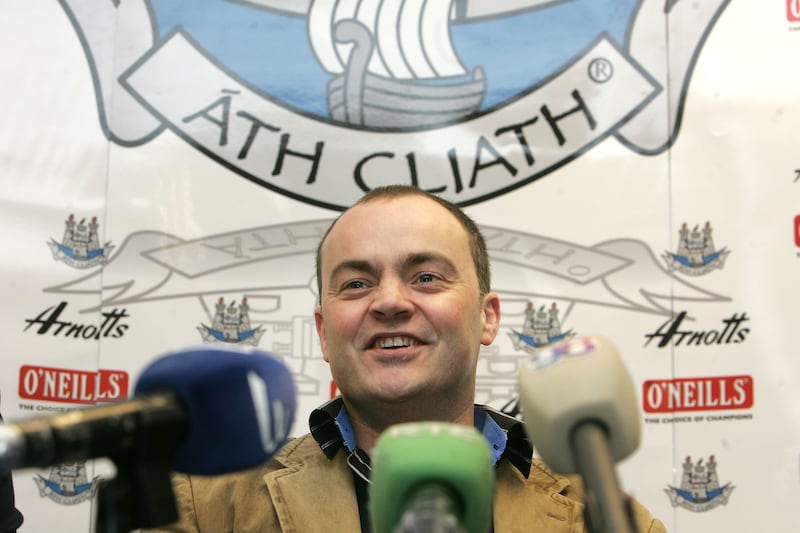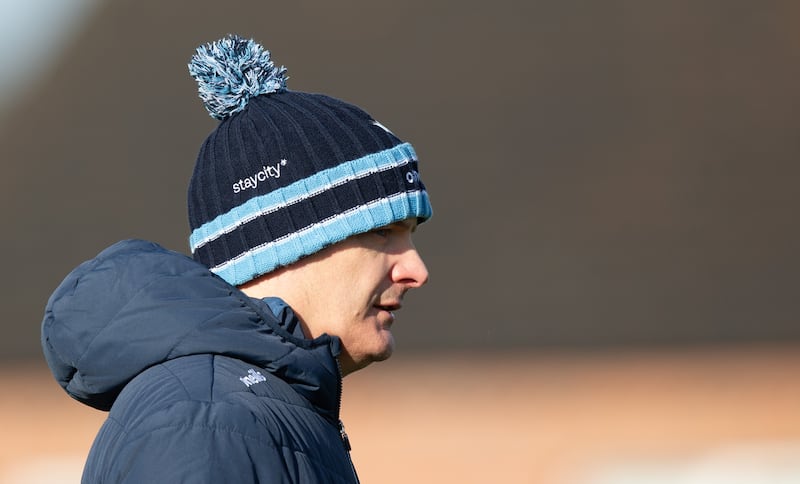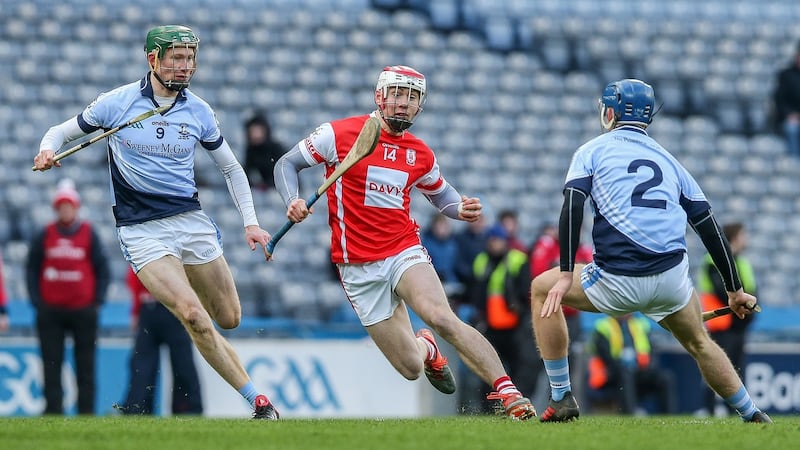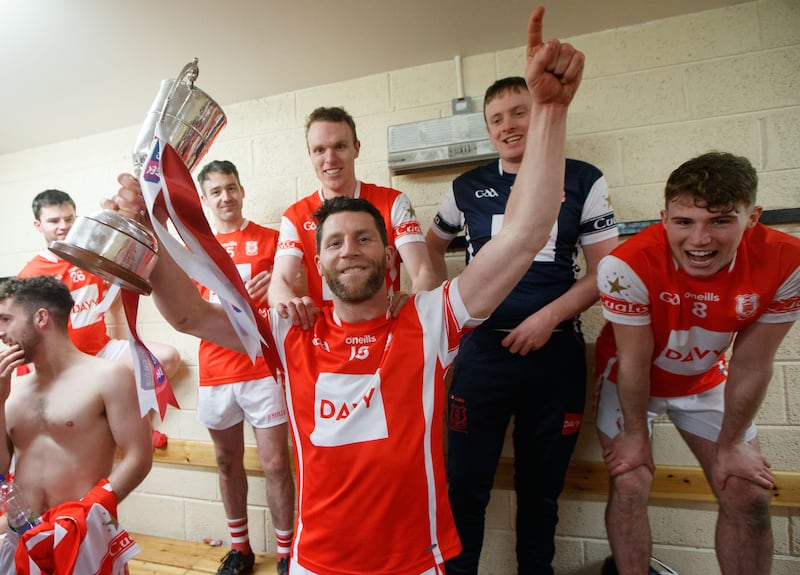A former Dublin hurler tells a story about a meet-and-greet for the Dublin teams in Palmerstown in the late spring of 2011. A couple of weeks earlier, Dublin had won the hurling league for the first time in 72 years, trouncing Kilkenny in the final. A week after that the footballers had surrendered an eight point lead to Cork in the football final, further evidence of their mortal flakiness under pressure.
The hurling team didn’t have a mass following but, for once, they had mainstream appeal and a reputational edge on the footballers. “‘Ye’ll win the All-Ireland before the footballers. They’re fecking useless.’ That’s the kind of thing we were hearing from the supporters that day,” says the Dublin hurler. “And that wasn’t an isolated incident, that’s what people were saying.”
Those forecasts perished, as you know. Four months later Dublin won their first football All-Ireland in 16 years, launching a decade of unique dominance. And the hurlers? They had one more really good season and a handful of other years when their ambitions were valid and unfulfilled.
It is 10 years since Anthony Daly stood down as manager. His six seasons in charge had delivered not just a league title but a first Leinster title since the 1960s and four Leinster final appearances; more than that, he had altered the culture of the group and made them look up. They played like a team with prospects, not always, but often enough to be credible.

Because of his energy and charisma, people wondered if the team would lose altitude after Daly’s departure, but the competing feeling was that Dublin hurling had crossed a threshold. The work done in Daly’s time had an empirical quality that would surely survive him. A year later Limerick came to Croke Park, just as they will this weekend, and lost to Dublin by 12 points. A few months later the teams met again in the championship and Dublin won again.
Limerick are something entirely different now. Dublin are not the same either. In the last 10 years they have contested just one Leinster final and three All-Ireland quarter-finals. Their really good days are more scattered now, and more surprising. They seem stuck. Why?
Shane Martin was a selector with Daly during his last two seasons and had hurled for Dublin for over a decade. When Daly finished Martin devoted himself to development squads for half a dozen years, and was involved with the last Dublin minor team to win a Leinster title, six years ago now. He can see the stasis but not blatant causes.
“There’s probably a sense that we didn’t build on the Daly era, but I find it very difficult to point a finger at why. I don’t think it’s a case of the county board neglecting it. Look at the quality of managers [Ger Cunningham, Mattie Kenny, Pat Gilroy, Micheal Donoghue]. When each of those managers was appointed you wouldn’t be saying, ‘Jesus, they just threw anyone at that.’ I would have been going, ‘Yeah, happy with that.’
“I don’t think there’s been a lack of response from the county board either when teams came looking for resources. From that perspective you couldn’t point the finger at the county board.”
Once upon a time, and not that long ago, the hurlers did feel like second class citizens. When Daly came in first he said he was “going around begging” for places to train. Before he finished, though, most of those issues had been addressed. Parity of esteem with the footballers had been established.
The hurlers lacked none of the necessary supports for high performance. Everything from training camps abroad to gear and gyms and grub. All of the things money could buy were provided.
As the footballers became more successful, some of the spin-offs landed in the hurlers’ laps: a free suit every year from Jack and Jones, a monthly €30 discount voucher from Gourmet Parlour. The county board had an annual deal with Mitsubishi for a small fleet of sponsored cars and they were divided between both panels. None of these perks had anything to do with elite performance but at least the hurlers couldn’t claim to have been short-changed.

“We were probably a bit embarrassed that we were piggy-backing on the footballers’ success,” says one former player. “Getting things we shouldn’t be getting or didn’t deserve. Cars and suits and all this craic. It’s great but you should be winning All-Irelands before you’re offered those things.”
With the hurlers there was an interesting anomaly. During the footballers’ six-in-a-row, as the arguments about Dublin’s competitive advantages became hotter and more intractable, the hurlers were never mentioned. Dublin’s massive population, their unique attractiveness to commercial partners and their fiercely contested chunk of central funding were only ever touted as game-changers for the footballers. Not the hurlers.
If, for argument’s sake, all of those factors were so critical to the success of the footballers, why has that magic potion not worked for the hurlers? Was it because playing numbers were wildly different? Not especially. In comparative terms, only Cork has a greater population of adult club footballers than Dublin; only Cork and Tipperary can boast more adult club hurlers. In theory, at least, the raw material should exist.
“That strength in numbers somewhat masks over the quality issue and lack of coaching that is maybe going on at ground level,” says one coach who spent 15 years with Dublin development squads. “People are doing their absolute best looking after club teams but the organisational structure is just not that strong, coaching wise.”
There were other factors too, though their impact is hard to quantify. Over the years, for example, there were some high profile custody battles for talented dual players; football won most of them. Like in Vegas, the house wins.
The Dublin minor hurlers reached back-to-back All-Ireland finals at the beginning of the last decade and all the players with a decision to make plumped for football: Ciaran Kilkenny, Cormac Costello, Eric Lowndes, Conor McHugh, Emmett O’Conghaile. Two of those players – McHugh and O’Conghaile – languished on the football panel for years without making a breakthrough.

When Dublin reached the U-20 All-Ireland final four years ago, Lee Gannon was one of their best players. Like the others he chose football. Con O’Callaghan was a dual minor too, and a brilliant club hurler with Cuala. Despite all the talented players at their disposal, there would have been a big hole in the Dublin footballers for the last decade without Kilkenny, O’Callaghan and Costello. The hurlers were left to fill that hole.
“Football is king,” says the former development coach. “No matter what way you want to look at it, the Irish rugby team is the only bigger show in the country than Dublin football.”
Martin takes a more nuanced view: “All you can do is get your own house in order. If you’re looking over the fence and bemoaning the success of the footballers, ultimately, what is that going to do for you? Absolutely nothing. Guys that are passionate about hurling and believe in hurling and get real joy out of it, if your house is in order, they might choose hurling.
“The development squad that I was involved with, we had a number of guys that could have chosen football but they choose hurling. Some of them are appearing on the senior team now.”
Have Dublin made the most of their resources over the last decade? Maybe not. Cuala reached two All-Ireland finals in succession with arguably the best club team ever to leave the city. Did Dublin get much of a bounce from those players?

“Not enough for long enough,” says Shane Stapleton, the journalist, coach and podcaster, who was part of those Cuala panels.
A Tipperary native, Stapleton is immersed in the club scene in Dublin now and has coached the UCD Freshers for the last three years. He can see the passion on the ground and he can see the challenges for a coach trying produce a winning Dublin team.
In last year’s championship, Whitehall Colmcilles played Eoghan O’Donnell at full-forward and he was the top scorer from play in the top tier of the club championship. O’Donnell has been one of the best full-backs in the country for years but Dublin are looking for solutions at the other end of the field and they gave him in a run in the number 14 jersey against Galway in the Walsh Cup. He got injured before any conclusions could be reached, but it was symptomatic of the issue.
“Imagine Limerick deciding they were going to try Dan Morrissey at full-forward because the ball won’t stick up there?” says Stapleton. “In that Walsh Cup match they missed about 3-16 worth of chances. It comes back to not having penetration at the top end of the pitch. If you don’t have killers at the top of the pitch it’s very difficult.”
Since Donoghue took over less than 18 months ago there has been huge churn. About 50 per cent of the panel he inherited are unavailable now, for a variety of reasons. Even in a county where options were bountiful, managing that turnover would be a massive challenge.
Donal Burke, O’Donnell, Danny Sutcliffe will soon be back from injury; Chris Crummey has returned from his overseas adventure and will slot in again. They were porous against Tipperary in the opening league game, and terrible against Antrim, but it is reasonable to expect that Donoghue will stabilise them before the championship.
Any prospects? Nobody could answer that question with optimism. Not now.
- See our new project Common Ground, Evolving Islands: Ireland & Britain
- Sign up for push alerts and have the best news, analysis and comment delivered directly to your phone
- Find The Irish Times on WhatsApp and stay up to date
- Our In The News podcast is now published daily – Find the latest episode here











